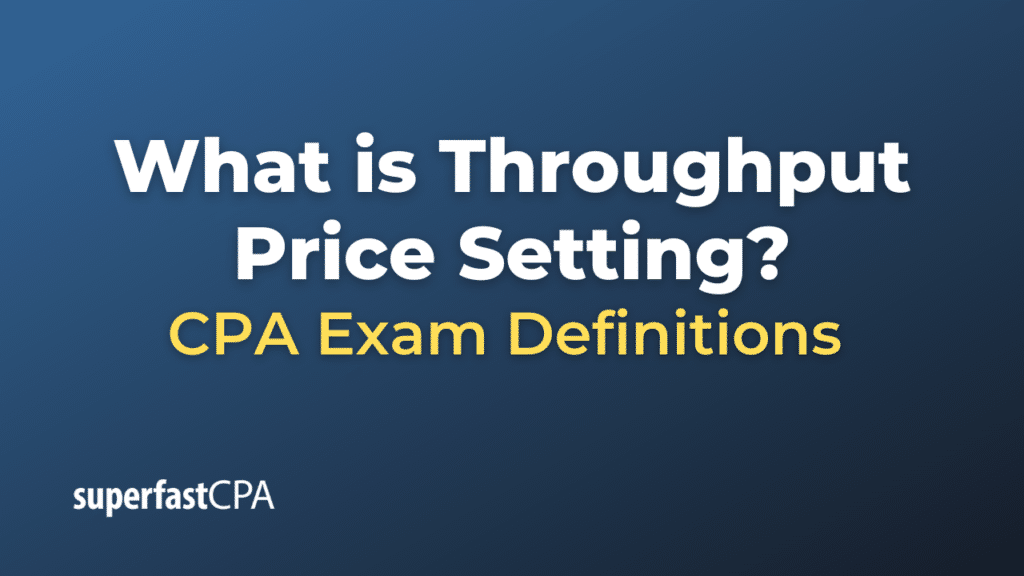Throughput Price Setting
Throughput Price Setting is a pricing approach derived from the principles of the Theory of Constraints (TOC) and throughput accounting. Instead of basing pricing on traditional cost-plus models, throughput price setting focuses on maximizing throughput—the rate at which a system generates money through sales, less truly variable costs.
Here’s a breakdown of the concept:
- Throughput Contribution: This is the revenue from selling a product minus the truly variable costs associated with that product. Truly variable costs might include raw materials or direct labor, but they wouldn’t include allocated overheads or fixed costs, which are considered under traditional cost accounting.
- Pricing Based on Throughput: Rather than setting prices based on total costs (fixed + variable costs) plus a desired profit margin, throughput price setting focuses on covering truly variable costs and then setting a price that maximizes the throughput contribution.
Steps in Throughput Price Setting:
- Identify Truly Variable Costs: Determine the direct costs associated with producing one additional unit of a product.
- Determine Market Price Range: Research the market to understand the price range that customers are willing to pay for the product or service.
- Set the Price: Aim to set the price at the higher end of the market range (as long as demand remains unaffected) to maximize throughput. Ensure that the price covers the truly variable costs, with the remainder contributing to covering fixed costs and generating profit.
- Monitor and Adjust: Continuously monitor sales and adjust prices if necessary, based on market conditions, demand, and competition.
Example of Throughput Price Setting
Let’s delve deeper into an example using throughput price setting in a fictional scenario involving a boutique bakery.
Scenario: “Dough Delight” Boutique Bakery
Background: “Dough Delight” is a boutique bakery known for its artisanal bread. Their signature loaf, the “Golden Grain,” has become immensely popular in the local community. They want to determine an appropriate price for the “Golden Grain” using the throughput price setting approach.
Breakdown:
- Identify Truly Variable Costs:
- Raw materials (flour, yeast, salt, water): $2.00 per loaf
- Direct labor (baker’s time): $1.00 per loaf
- Total truly variable cost per loaf: $3.00
- Determine Market Price Range:
- After researching competitors and surveying potential customers, “Dough Delight” finds that similar artisanal breads are priced between $5 and $9.
- Set the Price:
- Taking into account the perceived quality and uniqueness of the “Golden Grain,” as well as the bakery’s brand reputation, they decide to set the price at $8.50 per loaf.
- Throughput contribution per loaf: $8.50 (price) – $3.00 (truly variable costs) = $5.50
- Monitor and Adjust:
- Over the next few months, sales of the “Golden Grain” are robust, and customer feedback is overwhelmingly positive. Due to increasing demand, “Dough Delight” considers opening another outlet.
- However, a new competitor enters the market with a similar bread priced at $7.50. Dough Delight” notes a slight dip in sales but decides to maintain its price, focusing on its unique selling propositions (USPs) and superior quality.
- They also introduce loyalty programs and bundled deals with other products to enhance value and maintain their customer base.
In this scenario, “Dough Delight” uses throughput price setting to maximize their profit from each loaf sold, while also staying competitive and ensuring they offer value to their customers. This approach allows them to clearly understand their margins on a per-product basis and make informed decisions about scaling, promotions, and potential adjustments in response to market dynamics.













